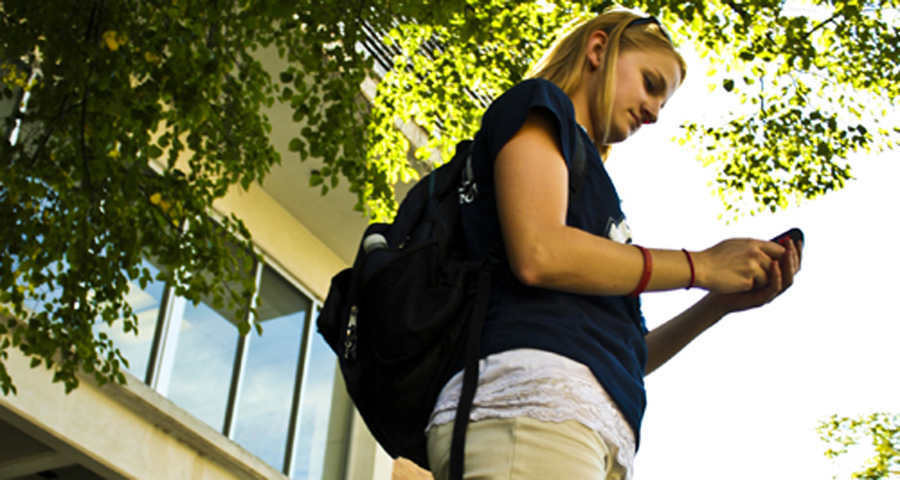Texts inform riders of shuttle locations
A new feature on the Aggie Shuttle GPS tracking system now allows students to receive text alerts via cell phones, informing them on the distance a bus is from a particular stop, said Shuttle Supervisor Alden Erickson.
In addition to the text message alerts, a mobile version of aggiebus.com, which tracks each bus on each route across campus in real time, is now available for smart phones.
“We’re continually trying to make things more convenient for our ridership,” Erickson said.
“We’ve made great strides this year to make it more reliable.”
Erickson said the buses used to be tracked to the website using cell phones, a different phone for each bus, which were operated by the bus drivers. Now, the GPS is hardwired directly into each bus, making the information more accurate and timely.
The numbers for standard text messaging are posted at each bus stop. Each bus stop on each route has a different number, so that a student can text for that stop and find out how long until the bus will arrive at that particular location.
The text message is routed to a server which gathers the information needed from the GPS system already in the buses and sends a response within 20 seconds.
There are also large TV monitors mounted in the south end of the TSC across the hall from the Quickstop and computer lab that show the buses on a map. They also show an automatic, airport-style scrolling list of arrival times for each route. Erickson said he hopes to eventually install monitors at several more sites throughout campus.
“In winter it will be really kind of cool, you want to stay warm as long as you can,” Erickson said.
There is a link to the site on the USU homepage, or those with data plans can access the mobile site at aggiebus.com/m. The Aggie Shuttle also has a Twitter feed under the username “aggiebus.” Aside from bus locations and arrival times, these media outlets will also have information about bike racks, alternate routes or closures.
Both the original system and subsequent improvements were designed by USU alumnus Justin Rees, who now owns the company Ride Systems. Rees originally came up with the idea as part of a senior project for his major in Management Information Systems (MIS).
He said he has always liked to find ways to improve efficiency, and loves to use technology to accomplish his goals. In this case, he said, the end goal was to provide students with a way to know where their bus is, all the time.
“The student body is eager for real-time information, as real-time as we can give it to them,” Rees said.
Rees worked as a bus driver during his time at USU, and worked with Erickson to implement the idea. Now, it is used in more than a dozen universities across the country, from the University of Utah and Boise State to schools in Washington, D.C. and Pennsylvania.
He said the system started out simply, using cell phones to track the buses, because GPS equipment is expensive and the tracking and integration with mobile devices and the monitors involves more complex programming. Erickson said the GPS units currently in use are low-cost but high-value and offer functionality without being too expensive. Apart from the interactive features for students and other riders, the GPS system also allows the bus drivers and administrators track ridership, maintenance and repair records, inspections and operation.
“We’re trying our best to be on the cutting edge of everything with our limited resources,” Erickson said.
Rees said students should understand that they have one of the most cutting-edge systems in the country, and are “ahead of the curve” for universities of a comparable size.
“It’s a very cool system,” Erickson said. “It’s mainly for the campus community and students’ access.”
Rees said Erickson should be commended for “forward-thinking” and taking the initiative to find ways to make riding the bus more convenient.
Other changes coming to the Aggie Shuttle system include bike racks on all of the buses by next semester and two new buses which will have forward-facing seats, seatbelts and storage underneath the bus, Erickson said. He said the new buses will initially be used for charters, but may see time on regular campus routes as substitutes.
– chelsey.gensel@aggiemail.usu.edu

